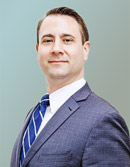Below you will find a real life case study of a couple who is looking for financial advice on how best to arrange their financial affairs. Their names and details have been changed to protect their identity. The Globe and Mail often seeks the advice of our Portfolio Manager & Senior Financial Planner, Matthew Ardrey, to review and analyze the situation and then provide his solutions to the participants.
![]()
Written by: Dianne Maley
Special to The Globe and Mail
Published April 5, 2025

Ezra, 63, and Leanne, 63, want to know the most tax-efficient way to sell their two rental properties to be able to fund their daughter’s education.
Ezra, 63, and Leanne, 63, want to know the most tax-efficient way to sell their two rental properties to be able to fund their daughter’s education.
Ezra and Leanne are both 63 years old and working full time. “We hope to retire at 65 but are afraid of the future and do not know if we can,” Leanne writes in an e-mail.
He makes $95,000 a year in hospitality while she earns $84,000 a year as an administrative assistant.
They have substantial savings and two rental properties “that unfortunately are not making money,” she writes. They bought them to fund their daughter’s dream of going to medical school. She is working on a master’s degree.
“Our situation – not knowing if we have enough, the tax consequences of selling the rentals – keeps me up at night,” Leanne adds.
“Will our money last for us to be able to live comfortably till the end?” Their retirement spending goal is $72,000 a year after tax.
“When should we consider disposing of our rental properties in the most tax-efficient way to be able to fund our daughter’s education?” They also ask when to start taking government benefits.
We asked Matthew Ardrey, senior financial planner and portfolio manager at TriDelta Private Wealth in Toronto, to look at Ezra and Leanne’s situation.
What the expert says
Ezra and Leanne have about $1.6-million in investment assets and cash, $1.4-million in rental real estate – less $800,000 in mortgages – and a home worth $900,000, Mr. Ardrey says. This gives them a net worth of about $3.1-million.
They are saving the maximum to their tax-free savings accounts (TFSA), $5,000 to Ezra’s personal RRSP and $10,000 to Leanne’s. In addition, Ezra is saving 6 per cent of his salary plus a 4-per-cent employer match to a defined contribution pension plan. Leanne is saving 3 per cent of her salary plus a 3-per-cent employer match to a group RRSP.
In the forecast, only TFSA saving will continue beyond retirement, the planner says.
They are spending about $5,900 a month – outlays minus savings – and want to continue this level throughout retirement. This figure was rounded to $6,000 for purposes of the forecast. In addition to the regular spending, which includes an allocation for vacations, they have several one-time expenses ahead: first year of medical school for their daughter $30,000; dental work $34,000; elder daughter’s wedding $25,000; and a new car $40,000.
To help fund these expenses and prepare for retirement, they have two rental properties that they plan to sell, Mr. Ardrey says. “Both properties are currently cash-flow negative, and they want to unburden themselves of this,” he says. “I recommend they wait until retirement to sell the properties to reduce the taxes payable on the anticipated capital gains.”
They should also consider selling each in a different calendar year to further reduce the tax burden, the planner says. In his forecast, they sell one in 2027 and the other in 2028. The after-tax proceeds go into a non-registered investment account.
Leanne and Ezra came to Canada in 1994. Based on this information only, they would get about 70 per cent of Canada Pension Plan benefits and 80 per cent of Old Age Security benefits when they retire. “If their originating country has a reciprocal agreement with Canada, these numbers may increase,” Mr. Ardrey says.
The current asset allocation for Leanne and Ezra is 82-per-cent stocks and 18-per-cent cash and bonds, excluding the bank accounts, which have been designated as emergency funds. “Though this a great asset mix for accumulating, it does leave them open for volatility risk in retirement when they are decumulating,” or spending their savings.
One of their goals is to leave a tax-efficient estate for their children. To that end, they should start taking their registered retirement income fund (RRIF) and life income fund (LIF) minimums at retirement, the planner says. “This will also help balance out their taxable income over their lifetimes, as the bulk of their assets are currently in registered plans.”
Based on these assumptions, Leanne and Ezra can meet their retirement goal with ease, Mr. Ardrey says.
“To truly understand the risk in this plan, we need to move beyond the straight-line projection, as we know that life and investments rarely ever move in a straight line,” the planner says. “To ensure the viability of this plan, we stress-test it by using a Monte Carlo simulation, which introduces randomness to a number of factors, including returns, to stress-test the success of a retirement plan,” he says.
“In this plan, we have run 1,000 iterations with the financial planning software to get the results. For a plan to be considered likely to succeed by the program, it must have at least a 90-per-cent success rate, meaning at least 900 trials out of 1,000 succeed. If it is below 60 per cent, then it is considered unlikely to succeed. In between there is somewhat likely.”
Based on a Monte Carlo analysis of the numbers provided, Ezra and Leanne’s plan has a 100-per-cent chance of success, Mr. Ardrey says.
A note of caution: Although from this angle everything looks rosy, there is one major concern – their budget. Based on what they earn, save and spend as provided, there is more than $60,000 a year unaccounted for. “With the large amount in the bank accounts, I believe some of this amount is being allocated there; however, I am concerned that they may be understating their spending,” the planner says. “With that in mind, I reran the projections adding 50 per cent of this amount as an additional expense.”
In this scenario, their retirement cushion falls materially in the straight-line projection, though they are still succeeding, he says. The real difference in this scenario becomes apparent in the Monte Carlo simulation, where the likelihood of success drops to 79 per cent.
Part of this decline is owing to increased expenses they likely have, but the other part is because of their asset mix, Mr. Ardrey says. “Having 80 per cent in stocks and over half of that exposure in Canada with little international exposure causes more volatility,” he says. “Instead, they should look at reducing the stock exposure to closer to 60 per cent, increasing their geographic diversification and adding a focus on income generation in their portfolio,” he adds.
“Overall, I believe that Leanne and Ezra have a very strong chance to realize their retirement goals,” Mr. Ardrey says. They should take a good look at their budget to ensure they are correctly tracking their spending and make sure that their portfolio is properly diversified and at an appropriate risk level before they make the next step into retirement.
Client situation
The people: Ezra and Leanne, both 63, and their two daughters, 26 and 33.
The problem: Can they afford to retire comfortably and help their younger daughter through med school? When should they sell their rental properties and start drawing on their savings? How can they arrange their estate in the most tax-efficient way?
The plan: Retire as planned and start drawing on their RRSP/RRIFs and LIFs first. Take a good look at how much they are really spending. Take steps to lower risk in their investments.
The payoff: An excellent chance of succeeding at their goals
Monthly net income (including net rental loss and RRSP refund): $10,955.
Assets: Joint bank account $10,525; Leanne’s cash in bank $108,335; guaranteed investment certificates $21,750; U.S. dollar account $8,490; his TFSA $157,065; her TFSA $98,235; his TFSA GIC $16,560; her TFSA GIC $27,945; his personal RRSP $217,530; her RRSP $560,355; his group RRSP $114,900; her group RRSP $18,105; market value of his defined contribution pension $232,245; residence $900,000; fist rental property $588,000; second rental property $800,000. Total: $3.88-million.
Monthly outlays (residence only): Property tax $410; water, sewer, garbage $165; home insurance $140; electricity $90; heating $145; maintenance, garden $100; car insurance $290; other transportation $790; groceries $650; clothing $100; cash flow shortfall on rentals $1,305; gifts, charity $250; vacation, travel $875; dining, drinks, entertainment $85; personal care $25; music and Netflix $25; pets $25; sports, hobbies $25; doctors, dentists $75; drugstore $40; life insurance $70; phones, TV, internet $230; RRSPs $1,250; group RRSP $205; TFSAs $1,100; pension plan contributions $190. Total: $8,655.
Liabilities: Mortgage first rental property $363,135 at 4.5 per cent variable; second rental mortgage $363,215 at 4.03 per cent variable; line of credit converted to mortgage for down payment $69,930 at 6.79 per cent. Total: $796,280.
Want a free financial facelift? E-mail finfacelift@gmail.com.
Some details may be changed to protect the privacy of the persons profiled.

Presented By:
Matthew Ardrey
Portfolio Manager & Senior Financial Planner
matt@tridelta.ca
(416) 733-3292 x230
